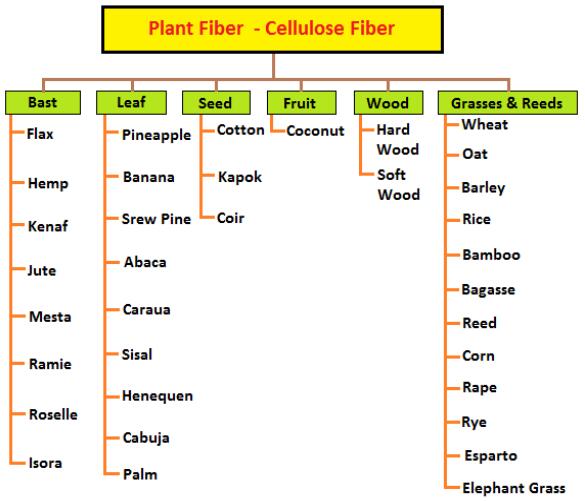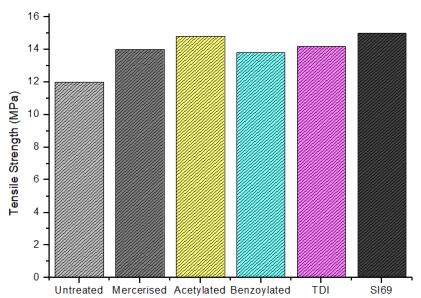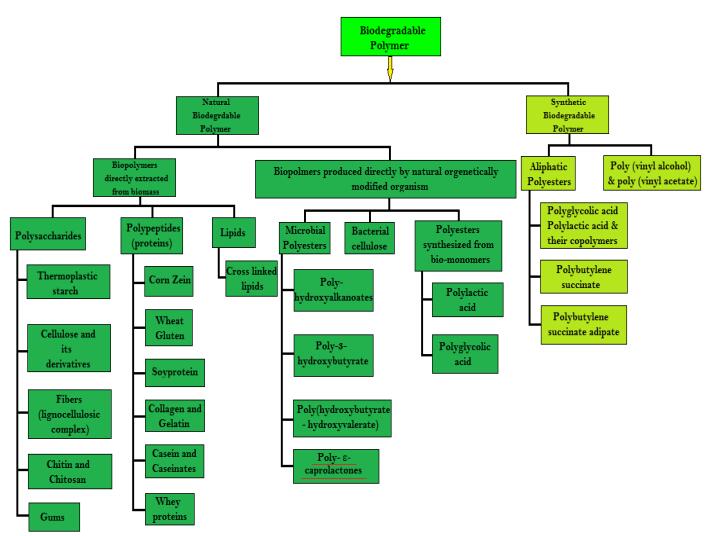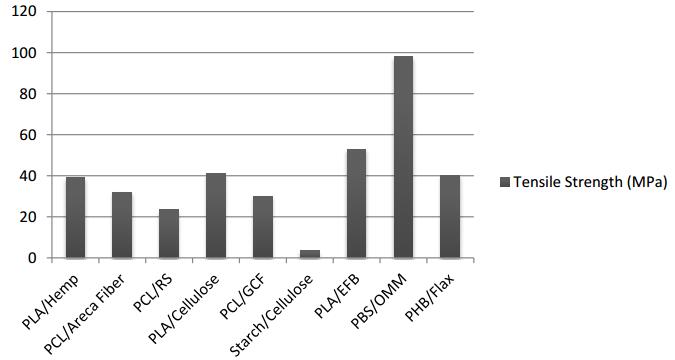In recent years, the development and use of composite materials are gaining importance in the field of aerospace, automobile, marine and other industrial applications because of their potential properties such as higher specific strength and better corrosion and fatigue properties than most metals. The ever-increasing temperatures on earth surface and the use of non-biodegradable materials for industrial applications lead to increase in global warming which forced the researchers to work on green composites that suite the properties and reliability of the metals, alloys, composites. The increase in use of polymers which are not biodegradable increases air and water pollution. Development of green composites helps to maintain ecological balance. The review of this article focuses on discussing the green matrix material and modifications needed for fibers to improve the properties of green composites.
1.
Introduction
The increase in use of polymer materials is increasing rapidly and has become a part of life of every human due to their potential applications. The use of polymers which are non-biodegradable offers a serious threat to environment. This motivates the researchers to look for other alternatives and development of bio-degradable composites is one of the ways to address the problem [1]. The depletion of traditional materials like ferrous and non-ferrous materials lead to the development of composite materials and these rapidly replace the use of traditional structural materials. However, the composite materials are non-biodegradable and possess potential threat to environment and this motivated the researchers to look for biodegradable composites and develop fibers which match the properties of fiber reinforced polymers like carbon, glass, boron etc. [2,3]. Polymer composites have attractive characteristics which offer the advantages of light weight, low cost and easy manufacturing techniques which make it a suitable replacement for metals and alloys by improving fuel efficiency. However, polymers exhibit low tensile strength and Young's modulus when compared to alloys and metals. This disadvantage can be reduced by adding low content nanofillers usually (<5 wt%) which keep the characteristics of polymer to remain unaltered and improve properties such as thermal, optical and magnetic properties making it a suitable replacement for conventional materials [4,5,6].
The carbon-based nanofillers are the most frequently used fillers to improve the strength of polymers. Carbon nanotubes and graphene are gaining importance for industrial applications. Recently, developed bio-carbons like bio-chars offer promising characteristics and have the ability to replace the classical carbon fibers. Bio-carbons are produced from renewable resources have high thermal properties and have lower densities when compared to minerals. The bio-carbons can be produced by much cleaner and economical ways which can exhibit high Young's moduli and hardness after pyrolysis [5,6]. For engineering applications, bio-carbons and polymers are produced for improving tensile and flexural properties [7]. The review article focuses on natural fibers and biodegradable matrix materials that have the potential to replace the polymer based composites.
2.
Natural fiber
The renewable and biodegradable properties of natural fibers and their comparable mechanical properties made the researchers, scientists and engineers to use natural fibers reinforced in polymers as a suitable substitute of polymer-based composites and an extensive research work is being carried out to make it as suitable reinforcement and use it in every aspect of life. In recent years, many researchers have carried out their researches in the field of natural fibers for developing green composites [8]. The economical and biodegradable advantages of natural fibers coupled with comparable mechanical properties and chemical resistance, the natural fibers are tested and characterized to make it as suitable reinforcement for conventional fibers such as glass, carbon and kevalar [9,10,11,12,13,14].
Natural fibers are the fibers which are derived from natural resources like minerals, animals and plants (Figure 1). The fibers obtained from these sources are converted into yarn and are termed as natural fibers. The fibers that are derived from minerals are called mineral fibers and the naturally occurred mineral fiber is asbestos. The variations in mineral fiber are the serpentine, amphiboles and anthophyllite. The commonly used ceramic fibers are glass fibers, silicon carbide, aluminum oxide and boron carbide. Metal fibers objectively used area luminous fibers. Animal fiber consists of proteins, for example, wool, silk, mohair, alpaca. Animal hairs are extracted in the form of fibers. Animals like sheep's wool, goat's hair, alpaca hair, horse hair, etc. Silk fibers are collected from the dried saliva of insects during the time of preparation of cocoon. Plant fiber was found wide application in recent researches because of their wide availability, cost effectiveness and renewability in shorter time. Figure 2 and Table 1 depict the classification and properties of plant fiber respectively. All the natural reinforcing fibers contain lignin and cellulose by nature. The contributions of cellulose and lignin are different for every bio-fiber. As reported by many authors, various mechanical properties of natural fibers are a function of cellulose content in fiber, the degree of polymerization of the cellulose and the micro-fibril angle [15,16,17].
Cellulose is generally made up of crystalline and amorphous regions that makes chemical penetration difficult to occur due to cellulosic compactness, as well as they are highly polar and hydrophilic. To overcome this, natural fibers need to be chemically treated. Peroxide, mercerization, silane, acetylation, benzoylation treatment etc. are being applied to modify fiber surface properties [19].
Recent study reveals that the thermal degradation resistance of jute fabric can be significantly improved with the flexible epoxy coating and lower degradation temperature at high curing agent contents is due to the presence of flammable residue from the curing agent [19]. Joseph et al. [20] stated in their study that structural constituents of natural fiber (lignin, cellulose, hemicelluloses, etc.) show temperature dependency variations. Lignin starts degrading at 200 ℃ and cellulose and hemi-cellulose at higher temperatures. Munawar et al. [21] reported in their study that degradation plays an important role in the development of natural fiber composites. Andy Sutton [22] and his fellow researchers in an article made a comparative study between the thermal and acoustic insulation properties of natural fiber with other insulation material. They also suggested natural fiber may offer same properties but with lower or potentially negative carbon footprints.
Recent study shows that moisture increases with fiber volume fraction increases due to increased voids and cellulose content. The water absorptivity pattern of these composites at room temperature is found to follow Fickian behavior, whereas at elevated temperature the absorption behavior is non-Fickian [23].
3.
Fiber modification
Despite of various advantages that natural fiber was rarely dispersed in polymer matrix, there are some disadvantages that need to be addressed for better physical and mechanical properties. Some of them are improper adhesion at the interface, wettability, and processing temperature. The strong polar character of natural fibers creates incompatibility with most polymer matrices and the phenomenon at the interface decides the physical and mechanical properties of composites. Chemical treatment of natural fibers enhances the interfacial adhesion between the fiber and matrix and increases their water repelling property. Natural fibers are subjected to chemical treatments like dewaxing, mercerization, bleaching, cyanoethylation, isocyanate treatment, silane treatment, peroxide treatment, acylation, acetylation, benzoylation, latex coating, steam-explosion [24,25]. Surface treatments of fibers enhance the intermolecular hydrogen bonding between fibers which usually restricts the dispersion of fibers in the polymer matrix. Many researchers stated chemical treatments to improve fiber strength, fiber stiffness and adhesion between fiber and matrix of natural fiber-reinforced composites [26,27]. Mathew et al. [28] used a novel fiber—isora fiber—in natural rubber. The effects of different chemical modifications, including mercerisation, acetylation, benzoylation and treatment with toluene di-isocyanate and silane coupling agents, on tensile strength of isora fiber were shown in Figure 3.
3.1. Alkaline treatment
Alkaline treatment is also known as mercerization, and it is the most common and best method for treating the fiber when they reinforce thermoplastics and thermosets polymers. Alkaline treatment of fibers results in higher aspect ratio [25,29]. Alkaline treatment is usually performed on short fibers by heating at 80 ℃ in 10% NaOH aqueous solution for about 3–4 h, washed and dried in ventilated oven. The following reaction takes place:
Fengel et al. [30] investigated the degree of swelling is influenced by the concentration of the different alkali treatment such as KOH, LiOH and NaOH. Behera et. al. [31] studied the processing and properties of grass fiber reinforced soy-based composites. The untreated grass fiber was compared with the grass fiber treated with an alkali solution. It was found that the dispersion of the raw grass fiber in the matrix was not uniform, whereas most of the fibers were bunched. The aspect ratio of the fiber in the matrix and the interfacial adhesion between the fiber and the matrix were enhanced. The tensile properties of 30 wt% alkali-treated grass fiber reinforced composites improved by 60%, the flexural strength by 40% and the impact strength by 30%, compared to the 30 wt% raw fiber-reinforced composites.
In another study, Aziz et al. found the effects of alkaline treatment and fiber alignment of kenaf and hemp fiber composites. Surface of the untreated fiber bundles, for both kenaf and hemp fibers, showed the presence of wax, oil and surface impurities. In comparison with untreated fiber, the longitudinal view of 6% NaOH treated kenaf and hemp fibers showed a very clean surface [32].
3.2. Saline treatment
Silane treatment belongs to a chemical family with a chemical formula SiH4. They are used as coupling agents to enhance the adhesion between natural fibers and polymer matrix. Silane coupling agents may reduce the number of cellulose hydroxyl groups in the interface of fiber matrix. In the presence of moisture, hydrolysable alkoxy groups lead to the formation of silanols. Silanol then reacts with the hydroxyl group, forming stable covalent bonds [33]. There is a decrease in swelling property of the fibers by the creation of the cross-linked network as a result of covalent bonding between fiber and the matrix.
An investigation suggested that the mechanical properties of pineapple leaf fiber reinforced composites are the function of fiber loading, fiber length and fiber chemical treatment. A 40% increase in the tensile strength was observed when the fibers were treated with silane A172 (vinyl tris(2-methoxyethoxy) silane). The flexural properties of pineapple leaf composites were also increased by approximately 7%. Adding the coupling agent, i.e., silane A1100 (γ-amino-propyl trimethoxy silane) enhanced the Young's modulus of the composites only marginally [34]. Chemical formulation of silane as a coupling agent allows it to form a chemical bridge between the outer surface of the cellulose fiber and the resin by a siloxane link. It also regulates the hydrocarbon chains that contain fiber swelling with the matrix [35,36,37]. A study reveals that for jute-epoxy composites alkali treatment followed by silane treatment resulted in about 12% and 7% higher strength and modulus properties compared to the alkali treatment alone. Similar treatment led to around 20% and 8% improvement for jute polyester composites [37].
3.3. Acetylation
Acetylation treatment is a method for plasticization of the cellulose fiber. In this method, an acetyl function group is introduced into an organic compound. Esterification is one of the methods for acetylation of natural fibers. In an investigation, natural fibers are chemically treated with acetic anhydride (CH3–C( = O)–O–C( = O)–CH3). Acetic anhydride replaces the polymer hydroxyl group with acetyl groups, modifying the properties of these polymers so that they become hydrophobic [38].
This study made it clear that individual acetic acid or acetic anhydride cannot sufficiently react with natural fibers, on the other hand in order to accelerate their effect on fibers, they are initially soaked in acetic acid and after 2–3 hour they are treated with acetic anhydride at higher temperature. This treatment imparts rough surface with less void content [35]. Another study suggested that acetylation decreases the hygroscopic nature of fibers thus maintaining the dimensional stability of the composites [38,39,40]. Bledzki et al. [41] investigated that the acetylation reaction rate increased in the presence of catalyst and without catalyst the reaction kinetic of acetylation process was slower and dependent on fiber moisture content. It was also observed that the moisture absorption properties reduce and were inversely related to the acetyl content of fiber which was because of reduction of hydrophilicity of the fiber. Acetylation on flax fibers decreases the polymerization with the increase in acetylation till 18%. In the same investigation, Bledzki found that tensile and flexural property of the flax fiber increased with the increase in acetylation till 18%.
3.4. Benzoylation
Benzoylation transforms the organic synthesis of the fiber [42]. Benzoylation also reduces hydrophilicity of the fiber and improves fiber matrix adhesion. In this context benzoylation uses benzoyl chloride to reduce hydrophilic nature of the fiber thereby increasing the strength of the composite and it also increases the thermal stability of the fiber [43,44]. Before Benzoylation, alkali pre-treatment is performed to activate the hydroxyl groups of the fiber. Alkali pre-treated fiber shows higher degree of thermal stability than the untreated fiber [45]. Wang et al. experimentally showed that benzoylation treatment increased the tensile strength and moisture resistance properties by 6% and 33% respectively [36]. In another study, Rao et al. observed that the benzoyl treated fiber gives the best wear resistance over the untreated fiber. As the percentage of treated and untreated coir fiber increases the wear resistance also increases [46].
3.5. Peroxide treatment
In peroxide treatment RO* free radical from functional group ROOR reacts with hydrogen group of the cellulosic fiber. The peroxide initiated free radical reaction between PE matrix and cellulose fibers is shown by reaction suggested by Paul et al. [47]:
Khan et al. stated that peroxide treatment induced adhesion showed enhancement in mechanical properties and eased process ability of cellulosic fiber reinforced composites. Improved properties make peroxide as an attractive option among the researchers [48]. In organic chemistry, peroxide family members benzoyl peroxide (BP(C6H5CO)2O2) and dicumyl peroxide (DCP(C6H5(CH3CO)2O)2) are used in surface treatment of natural fibers. Peroxide treatment enhanced the interfacial adhesion between fiber and matrix and also enhanced the thermal stability with reduced moisture absorptivity [49,50].
3.6. Graft copolymerization
An effective method of surface chemical treatment of natural fibers is graft copolymerization. It was first appeared in 1943 and the concept was encouraged by Mark in 1953. The usual method is the creation of an active site over the backbone of the preexisting polymer for the synthesis of graft copolymers. Either free radical or a chemical group is the active site for graft copolymerization which may take participation in an ionic polymerization or a condensation process. Polymerization on this active site leads to the creation of graft polymer. In a study Rivera-Armenta et al. [51] mentioned the use of infrared spectroscopy for the evaluation of graft copolymerization of acrylic monomers. Singha et al. carried out the graft copolymerization of Grewia Optiva fiber with acrylic acid (AAc) by using a Ce(Ⅳ) redox initiator under air and in the influence of microwave radiation. After modification they found that graft copolymerization in air resulted in higher graft yield. In another study by Singha et al. observed the surface treatment of Grewia optiva fibers through graft copolymerization and benzoylation. They carried out the graft copolymerization of acrylonitrile (AN) onto Grewia optiva fiber under the influence of microwave radiation [52].
3.7. Isocyanate treatment
Isocyanate is another effective surface chemical modification of fiber which improved interaction with thermoplastics resulting in superior mechanical properties. Functional group of isocyanate is –N = C = O, which actively reacts with the hydroxyl group of cellulosic fiber, and forms strong covalent bonds, by creating better compatibility with the polymer matrix in the composites.
Isocyanates also act as a promoter or inhibitor of the interaction [53]. It also reacts with fiber surface moisture to form urea which further reacts with the hydroxyl group of cellulosic fiber [54]. The reaction between urea and hydroxyl group gives better moisture resistance to fiber and enhances the interfacial bonding with matrix and improves the composite mechanical properties [55].
3.8. Permanganate treatment
Permanganate treatment of natural fibers is performed in acetone solution by potassium permanganate (KMnO4). The highly reactive permanganate ions (Mn3+) react with hydroxyl group and form cellulose-magnate and initiate graft copolymerization [56]. The reaction between hydroxyl group of fiber and KMnO4 is given by:
Permanganate treatment increases the chemical interlocking and interfacial adhesion between the fiber and the matrix [57]. Paul with his group of researchers reported that etching action of KMnO4 on the banana fiber surface made it rougher to improve the interlocking between fiber and matrix thereby increasing the flexural strength and modulus properties by 5% and 10% for the treated fiber reinforced in polypropylene composites [58].
3.9. Stearic acid treatment
In stearic acid treatment, carboxyl group reacts with hydroxyl group of fiber and improves its water resistance properties. Stearic acid treatment improves the moisture resistance and mechanical property of the sugarcane fiber reinforced composites. Stearic acid was found to improve the compatibilization between sugarcane fiber and matrix (polypropylene) [59]. The reaction between fiber and stearic acid is:
Stearic acid treatment on natural fibers results in improvement of tensile strength and modulus properties compared to untreated fibers [60,61].
3.10. Fungal treatment
In the recent years, fungal treatment is considered as an alternative for chemical treatment for natural fiber surface treatment. Fungal treatment is a biological modification. In fungal treatment enzymatic action is performed on the fiber surface to make it free from wax and oil, and it also decreases its hydrophilic tendency by increasing hemicellulose solubility. Pickering et al. [62] studied fungal treatment on hemp fiber and reported 22% increment in composite strengths than the untreated sample. Jafari and Pickering in two different studies found that fungi produces hyphane generated holes on the fiber surface thereby providing rougher surface for better mechanical interlocking [62,63].
4.
Biodegradable polymer matrices
Many non-biodegradable petroleum-based polymers such as polypropylene, polyethylene and polystyrene have raised several environmental issues including waste generation, accumulation in disposal system and reproducibility, thereby increasing the volume of commercial and industrial dumps. As a result, researchers are interested in modifying existing materials to make them eco-friendly and design novel polymer composites out of naturally occurring materials [64,65,66].
There are a wide range of natural or synthetic polymers degrade by hydrolytic (polycaprolactone, polyglycolide, polydioxanone, polylactides, polyhydroxyalkanoates) and enzymatic (polysaccharides, protein, polyaminoacids) route. Biodegradable polymers are obtained from renewable resources synthesized from chemicals. They are capable of undergoing decomposition when exposed to environmental conditions. Biodegradable polymers have received good attention due to the major property of being fully-biodegradable into simple organic substances of hydrogen carbon, and oxygen by interactions with microorganisms such as algae, bacteria, and fungi [67].
The classification of biodegradable polymers can be explained according to their chemical composition, processing method, origin and synthesis method, application, economic importance, etc. In this study, they are classified according to their origin, i.e., natural and synthetic. Biodegradable polymers are found in nature during the growth cycles of organism, therefore they known as natural biodegradable polymers [68].
4.1. Starch
Starch is the commonly used natural biodegradable polymer and also a polysaccharide material which is produced mainly by potatoes, corn and rice [69]. Starch is produced in form of granules of different composition and sizes [70]. Crystalline nature of thermoplastic starch is processed by using heat or pressure to form an amorphous thermoplastic starch. They possess poor mechanical, low impact resistance, water sensitivity and brittleness properties [71,72]. It is found that fiber reinforced starch matrix is an effective approach to obtain enhanced properties in starch-composites [73] and another way is to blend starch with other thermoplastic materials [74,75]. Esterification of starch [76] allows the enhancement of thermal stability and thermoplastic characteristics. Other approach to improve the functional properties of the starch films is to blend starch with other polymers. Zhang et al. [77] investigated the properties of polylactic acid/starch blends with dioctlmaleate as a compatibilizer. He also stated that the increase in DOM concentration increased the elongation of the blends, on the other side water absorptivity also increased. Cavaille (1998) and Dufresne (2000) proposed the work on the use of microcrystalline whiskers of starch and cellulose as reinforcement in thermoplastic starch polymer and synthetic polymer nano-composites. Wattanakornsiri et al. [78] observed that the introduction of the cellulose fibers in thermoplastic corn starch enhanced the mechanical and thermal properties, and decreased the water absorptivity of the green composites. 8% of fibers into matrix showed the best improvement compare to other weight percentage. SEM of the composites specimens showed enhanced interfacial adhesion between thermoplastic corn starch matrix and cellulose fibers.
4.2. Poly(lactic acid)
Averous et al. in their study stated that lactic acid existed in two stereoisomers. Land D-lactic acid can be produced by chemically and biologically [75]. Chemically poly(lactic acid) is derived from corn starch and has improved properties over the other plastics derived from corn starch [79,80,81,82]. Poor mechanical and thermal properties of PLA restrict its application in various fields. These drawbacks in PLA can be taken care by reinforcing them with natural or synthetic fibers and blending with other polymers. Simoes et al. and Jain et al. suggested that blending of PCL with PLA enhanced the overall properties of the composite [83,84]. PLA shows a low water and oxygen acceptability level as compare to polystyrene [85,86]. Crystalline nature of PLA makes it very brittle possessing less than 10% elongation at break [87,88].
Various plasticizers like glycerol, citrate ester, PEG, PEG monolaurate, oligomeric lactic acid, triacetine and tributyl citrate have been used by researchers to lower the glass transition temperature, increase ductility, and improve processability of PLA [89,90,91]. In a recent study, Pongtanayut et al. observed that the toughness properties of PLA may be enhanced by blending with natural rubber (NR) and epoxidized natural rubber. Blending with natural rubber significantly improved the ductility of natural rubber at 10% weight appeared to give optimum property. Above 10% of natural rubber tensile properties of PLA significantly decreases [92]. Senawi et al. investigated the mechanical properties of PLA with treated or untreated empty fruit bunch (EFB) fiber. It was found that interfacial adhesion between PLA and EFB were enhanced by treatment of fibers with alkaline and then with silane [93]. Mechanical properties of PLA have been studied and enhanced by reinforcing them with fibers. In a study, physical properties of PLA/wood fiber composite were investigated. It was found that 20 wt% of wood fiber added in PLA enhanced the flexural strength by 19%, flexural modulus by 115% and tensile modulus by 77% [94]. Oksman et al. in their study observed that PLA/flax composites showed better properties than PP/Flax composites. They also studied the effect of plasticizer on the PLA/flax composites and found that plasticizer did not show any significant effect over the impact strength of the composites [95]. Tang and his fellow researchers found that flame retardancy of PLA composites was significantly enhanced by using aluminum hypophosphite (AHP) and expanded graphite (EG). Thermo Gravimetric Analysis showed that the PLA composites resulted in higher values char residue and decreased mass loss rate than neat PLA [96].
4.3. Poly(ε-caprolactone)
Poly(ε-caprolactone) belongs to the family of aliphatic polyesters and is easily available biodegradable polyester that has good mechanical strength and is also hydrophobic in nature [97,98]. PCL is partially crystalline with a low Tg of −60 ℃ and a low Tm of 60 ℃. Polycaprolactone is obtained by the ring polymerization of monomeric unit "ε-caprolactone". Nair et al. [99] reported that it had good processability and soluble in wide range of organic solvents. PCL exhibits some properties that are not found in other aliphatic polyesters. PCL from nature is biodegradable polyester, and it has been reported that it can be degraded by various enzymes like lysozyme [100,101]. Wu et al. observed that among the PCL and its composites with clay and starch, the ranking of biodegradability decreased in the order of PCL/starch > PCL/starch/clay > PCL > PCL/clay [102]. They also observed that tensile strength decreased when blending with starch, suggesting mechanical incompatibility between the two phases. In another study, Jha et al. studied the effect of pine cone fiber in PCL matrix incorporated a MCDM technique and found the optimal combination for deciding contribution of individual components [103].
4.4. Polyhydroxyalkanoates
Polyhydroxyalkanoates (PHAs) are agro-resource based polyesters and produced by fermentation from feedstock. PHA was discovered by a French researcher Maurice Lemoigne in 1926. Steinbüchel and Valentin in their study mentioned the diversity of PHA's statingover 150 monomers of PHA existsed as its constituents, thus allowing wide range of properties for different specific applications [104]. Reis et al. stated that due to their slow crystallization, small processing temperature range, and tendency to "creep" made them not suitable for various applications [105]. Some copolymers of PHA are Poly(3HB): Poly(3-hydroxybutyrate), Poly(3HB-co-3HV): Poly(3-hydroxybutyrateco-3-hydroxyvalerate), PHBV, Poly(3-HB-co-4HB): Poly(3-hydroxybutyrateco-4-hydroxybutyrate), Poly(3HB-co-3HH): Poly(3Hydroxyoctanoateco-hydroxyhexanoate), Poly(3HO-co-3HH): Poly(3-hydroxyoctanoateco-hydroxyhexanoate), Poly(4-HB): Poly(4-hydroxybutyrate). Poly(3-hydroxybutyrate) is highly crystalline polyester with high melting point (180 ℃). Barham and Organ prepared the poly(hydroxybutyrate-hydroxybutyrate-hydroxyvalerate) copolymer blends. They have shown that for freshly fabricated specimens, crystallization from a biphasic, rather than a homogeneous, melt leads to better improvement in yield and fracture properties [106]. Volova with his fellow researchers used PHA to produce mono-filament fibres and investigate their strength properties and degradability. They showed that PHA fibres did not undergo hydrolytic degradation when exposed to salt buffer over 120 days and that PHB and PHB/PHV fibres undergo active biodegradation [107]. In a study by Macedo et al., composites were fabricated with polyhhydroxybutyrate and waste powder of coconut fibre. The composite containing 10 wt% of coir dust showed improvements of 25% in elongation at break and 35% in tensile strength when compared with unfilled PHB. The dispersion of higher contents of filler resulted in premature failure and inefficient agglomeration [108].
5.
Green composites
Green composites are main focus of many researches and scientific projects [109,110,111,112]. Since green composites combine the advantageous properties of the individual constituents. Development of materials have good characteristics and which are fabricated and processed easily, so the market for eco-composites seems to be promising and realizable for double-digit growth in the near future [108].
It has been pointed out in many articles that bio-polymers reinforced by natural fibres showed considerable enhancement in tensile properties of green composites. Shakoor and his group prepared composites of PLA and Hemp fibre with noticible improvement in tensile properties [113]. Kamol and Sumon [114] fabricated Areca nut fibre reinforced PCL based UD-composites by compression moulding. Composite specimen's fabricated from areca nut fiber and treated with 4% of silane solution and at 500 krad of gamma irradiation achieved the highest mechanical properties. Another group of researchers studied the different loading of rice straw fibre in PCL matrix. They observed that 5.0 wt% RS was sufficient to enhance the tensile strength, and the highest tensile strength which was observed at 5.0 wt% RS loading was 23.44 MPa [115]. Figure 5 shows the comparison chart of tensile strength for various green composites [78,93,112,116,117,118,119].
Significant research work on green composites carried out at the German Aerospace Centre (DLR). Riedel and Nickel have reported the futuristic outlook of green composites, based on Uni-Directional laminates of hemp and flax fibers in thermoplastics (PHB, PCL, Starch based)
[112,113,114,115,116,117,118,119,120].
6.
Conclusions
The use of bio-polymers is still in the initial stage and further research is required to meet the demands of the present time. Natural fiber reinforced in bio-polymers provides a fruitful area for research for a wide variety of problems. Therefore, it is necessary to explore the possibilities of using biodegradable materials in green composites in different proportions to enhance their thermal and mechanical properties and thereby reducing the economical aspects of fabrication. Literature survey suggests that PLA, PBS and PCL are gaining much attraction compared to other biodegradable polymers in respect of mechanical properties. Advanced composites show tailored physical and chemical properties that have high specific stiffness and strength, dimensional stability, chemical resistance and relatively easy processing. Green composites combine the properties of the individual constituents. This is because they are the future of composite applications in numurous fields. Development of materials that have comparable and advanced mechanical properties which can be fabricated easily in any desired shape allows the designers to optimize the structure and equipment in relation with improved strength, reduced weight and cost.
Conflict of interest
The authors declare that there is no conflict of interest regarding the publication of this paper.
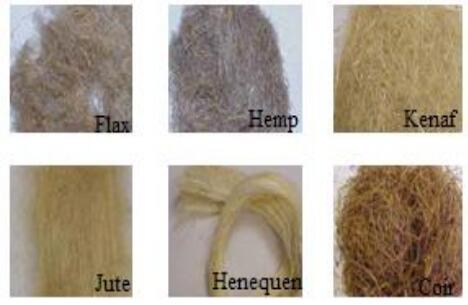









 DownLoad:
DownLoad:
